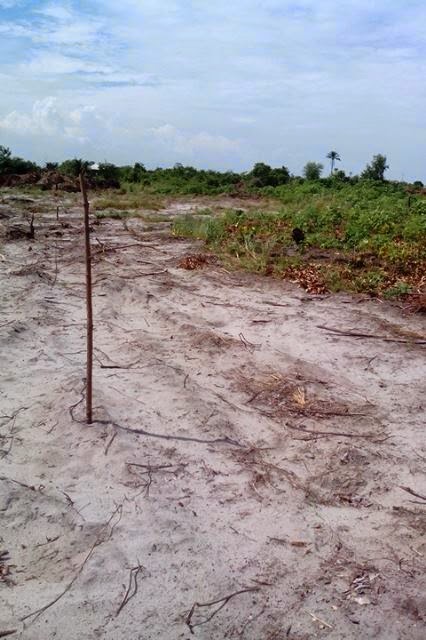New electricity tariffs out
EFFECTIVE from June 1, some electricity consumers will pay far lesser than what they are currently paying for fixed charges and energy consumption.
A few others, according to the Nigerian Electricity Regulatory Commission (NERC), will pay ‘slightly higher’.
For instance, residents of Abuja and environs, whose fixed charge was projected to increase to N1,500 from the N750 currently being paid, will from June 1 pay N702.
This is coming as NERC released the reviewed Multi Year Tariff Order (MYTO), which according to the commission, would take effect from this Sunday.
Poor electricity consumers will have their electricity consumption subsidised by the Federal Government, courtesy of a Power Assistance Fund being finalised by NERC and the Ministry of Power.
The Chairman of the NERC, Dr. Sam Amadi, who briefed reporters in Abuja yesterday, said the full details of the reviewed charges would be released soon.
Amadi, who announced that the subsidy would be captured in the next tariff review, stressed that the consultants working on the electricity subsidy fund were considering how the scheme operates in some other countries.
He said: “The Power Assistance Fund is not for those who don’t pay their bills or who cannot pay, so to say. It is for those who pay their bills actually. Because if you don’t pay your bill over sometime, and after due process, they will likely disconnect you. It is for poor or low-income consumers who, by way of policy, will be the one government will subsidise or mitigate the tariff they pay overall.
He said: “What we will see is that most of the consumers did not have any increase in their energy charge apart from Residential Two (R2) customers that have N1 increase in some places.
“So, instead of having a bigger Energy Charge (EC) increase that was published for 2014 MYTO since 2012, we now have the same fixed charge of N750 from the supposed N1500 which means a huge reduction and then a slight increase of about N1 or so for R2 customers.
“In Ikeja Disco for instance, R2 customers have their charges reduced because both their customer number and cost of service is optimum as they have what they require to serve their customers. They are more in a cluster, so the cost is cheaper and when they did the average with the cost of price they received, their energy charge came down lower.”
On the rates for the different states, he stressed: “The fixed charge has never been uniform, whether across customers’ classes or distribution companies. The tariffs we have always set since 2012 have been disco specific tariffs. It is possible that the fixed charge of some discos may be the same in some instances, but the principle is that they are essentially different costs and sizes.
“Even among customers’ classes, what R2 pays is not the same as what R3 pays and not what C2, C3 and other customers pay. They pay differently based on the calculation. If you go to our website since 2012, you will see that fixed charge has always been different.”
Noting that review had reduced the fixed charge component of the tariff that would have taken effect on June 1, Amadi noted how the result of the review indicates a reduction of the wholesale tariff that would be paid to generating companies as from June 1, 2014.
He said: “The general public is however to note that the wholesale tariff paid GENCOS is only one of the three components that make up the total tariff paid by consumers. The other two parts are the transmission and distribution components. Recall that one of the indices for the minor review is ‘available generation capacity’. Unfortunately, the well-known fact today is that gross available capacity from the grid as of March 31 review date is 4,306 MW. This is well below the 9061 MW that NERC had, on the basis of all information available to it, projected when MYTO was set in June 2012. This is a 52 per cent reduction on projected capacity. The reasons for this huge loss has been extensively reported and explained.
“Suffice to say that the consequences of this loss of available capacity completely outweigh the benefits that were gained from the positive macro-economic indices earlier discussed. The direct consequence for the Nigerian Electricity Supply Industry (NESI) is that the significant fixed costs incurred by all three sectors of the NESI have to be spread over a much lower quantity of energy projected to be sold to consumers. For this reason, the commission regrets that the distribution element, that is, the end user or customer tariff, will have to increase, this is in fulfilment of the statutory obligation in Section 5.76 (2) (a) of the Electricity Power Sector Reform Act of 2005 which mandates that the commission sets a methodology that allows ‘a licensee that generates efficiently to recover the full costs of its business activities, including a reasonable return on the capital invested in the business.’
“It is also noted that the cost of this increase would have been much higher but for the good macroeconomic management that produced a real reduction in wholesale (generation sector tariffs).”
He stressed further: “Our commitment as a regulator is to not only ensure that Nigerian electricity consumers have access to adequate and reliable electricity, but also to provide processes and mechanisms for effective remedies for any violations of service obligations by the service providers in the new Nigerian electricity market.”
Source: Guardian Newspaper

Comments
Post a Comment